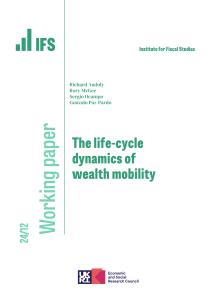This weekend the state pension age, for both men and women, rose to 65 years and five months. It will continue to rise every couple of months until it reaches 66 in October next year. Further increases to 67 in 2028 and to 68 a decade or so after that are planned. These increases are the obvious, if belated, response to a sharp growth in life span.
In less than 40 years, life expectancy for men at age 65 has risen by nearly a half, from 13 to 19 years. Women can expect to live longer still, though they have seen their state pension age rise already from just 60 as recently as 2010, catching up with the male pension age only last year.
These changes were all announced well ahead of time and should be reasonably transparent. Even so, many women were taken unawares by their increase in pension age, leaving them unable to prepare properly for a longer period without access to pensioner benefits. That change led both to an increase in the number of women staying in paid work for longer and to a significant loss of income, especially for the poorest for whom, as a fraction of their income, losses were the biggest.
The scale of the losses for those women who weren’t in work reflects a much less transparent policy change that has been happening for 20 years and more: the benefit system for low-income pensioners has diverged dramatically from that for people just below state pension age. It’s much better to be poor and 66 years old than to be poor and 64 years old. In the first case, your basic benefit, including means-tested Pension Credit, can be about £167 a week for a single person. In the latter case, it will be a mere £73 a week. Actual amounts will depend on housing costs, disability and so on, but the picture is clear — the state gives far more cash to people just the right side of pension age than it does to those who are slightly younger.
This is a relatively new phenomenon. The gap between basic benefit levels has risen from about 30 per cent in the early 1990s to about 130 per cent today. The result is that the poorest fifth of people in the five years after state pension age are about 70 per cent better off than the poorest fifth in the five years leading up to the state pension age. That gap was 17 per cent at the turn of the century.
All those numbers illustrate the deliberate impact of policies that have increased the incomes of poor pensioners and done nothing for those of working age. It looks rather stark when comparing people either side of the arbitrary line drawn by state pension age. It is also rather important to bear in mind when thinking about, for example, who might need free television licenses. It is quite clear that people in their early 60s who subsist on means-tested benefits are much poorer than Pension Credit recipients over the age of 75 — the group who will remain entitled to this perk.
It is not simply access to the state pension itself that matters, especially to the poorest, but access to the means-tested benefits that are so much more generous for those over the pension age. And access to those benefits recently has been narrowed down further. Until May of this year, if you were in a couple where one of you was above and one below state pension age, you could qualify for Pension Credit — the relatively generous income top-up for pensioners. Since May, as a couple you will be treated as being of working age when it comes to calculating entitlement to means-tested benefits if either one of you is below pension age, irrespective of the age of the other.
This is a big deal. The Department for Work and Pensions estimates that more than 100,000 low-income couples will lose nearly £6,000 a year as a result. The reason is simple. Pension Credit is far more generous than the Universal Credit to which low-income couples in this situation will now become entitled.
For some, where the age gap within couples is only a year or two, this change will matter for that year or two. For about one in eight couples around retirement age, the age gap between spouses is ten years or more. For them this change is a very big deal, indeed.
You can see the logic, of course. Why excuse a 56-year-old from normal work search requirements and pay them a bigger benefit just because their spouse happens to be 66? That might both undermine incentives to work and look unfair to other 56-year-olds who were foolish enough to marry someone nearer their own age. Since the large majority of both men and women are in work at age 56, it is not unreasonable to expect that of someone with an older spouse. Whether that argument applies so strongly to someone aged 64 with a 74-year-old spouse is perhaps less clear.
Ironically, the actual state pension age probably matters most for those for whom state pension receipt itself is relatively unimportant because they are entitled to means-tested top-ups in any case. Those top-ups suddenly become far more generous once pension age is reached. Given what state pensions are for, it does make sense to say that they are available once you hit a particular birthday and not before; given what means-tested benefits are for, a sudden increase at a particular age looks less sensible.
It’s time we worried about those just under, as well as those over, pension age.
Paul Johnson is director of the Institute for Fiscal Studies. Follow him on @PJTheEconomist
This article was first published in The Times newspaper and is reproduced here with permission.









